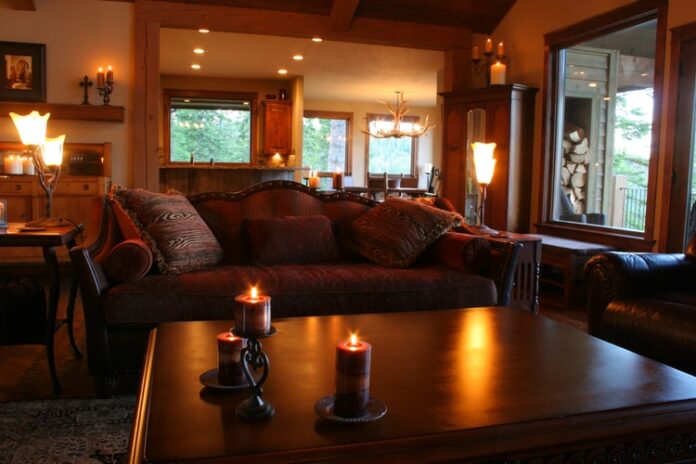Real estate agents often advise homeowners to bake bread or cookies before a viewing. Filling your house with a delicious food smell might hurry the sales process, but in everyday life, is oatmeal and peanut butter an appropriate scent for the bathroom? There are practical reasons for choosing different scents for each room in your house. Besides, if you use one fragrance too long, eventually you will not notice it anymore. Not only will you lose the experience, but you might try to compensate by upping the dosage, creating an overpowering atmosphere for guests. Here are some ideas for which scents to apply to each room, and how to invite different moods into the areas of your home.
Hallway
You might not have thought about applying scent in your hallway, but everyone’s first impressions are made here. Use fresh, floral fragrances to transition from outdoors to indoors. Hide a plug-in spray underneath a console table, or fill a vase weekly with fragrant blooms to provide a focal point. Potpourri would also look nice, but beware of heavy musks, and keep it light. Cut grass, lemon oil, hyacinth, jasmine, and magnolia are all fresh scents to welcome guests to your home.
Living Room
The living room is likely the central area of your house and the one room that should reflect your personality. Food scents are not always a good idea, as everyone’s focus will be on the dinner rather than conversation. If using lavender and chamomile, choose an energetic scent to complement them, as they have a sedative effect. Choose a lively, unusual scent, and do not be afraid to use musks in moderation. Sandalwood, orange oil, berries, cedar, and vetivert are good choices.
Kitchen
Naturally, this room lends itself to food scents. There are hundreds of varieties now available in candles and diffusers. Avoid plug-ins, as the residue may land on food preparation surfaces. Again, fresh flowers are an excellent visual source. Use fresh-baked cookies, cinnamon, strawberry, apple, sage, rosemary, and basil. Be aware that you also may want to use scents to deter insects and cover-up cooking smells; citronella does wonders, as do lemon and citrus candles.
Bathroom
Use fresh, non-heavy smells to give your bathroom a spa-like atmosphere. Clean linen works well, as do cotton and natural smells like rain and sea breeze. Be aware that you will also be able to smell the cleaning products you use, so choose complementary scents in bleach and toilet cleaners if you can.
Bedroom
You want to foster an atmosphere of relaxation and sensuality here. Dark, heavy scents work well. Do not be afraid to layer, but avoid overpowering the room if you have trouble sleeping. Incense sticks work well here, as do plug-ins and candles — arranged safely and never left attended. Use rose, lavender, vanilla, berries, patchouli, and lotus flower for deep relaxation and harmony.
It is possible to use scents to cover up odors such as cooking, pets, and cigarette smoke, so if there are areas of your home that are prone to malodor, make sure you pay attention to the scents you use nearby. Reed diffusers are an excellent safe, and potent way to disperse fragrance and are best placed high and out of reach of pets and children. Remember, some pets are sensitive to smells such as citrus and eucalyptus, so use these carefully and choose products with as few chemicals and pollutants as possible.
Story credit to [email protected]
Photo credit to Timothy Eberly/Unsplash.



































